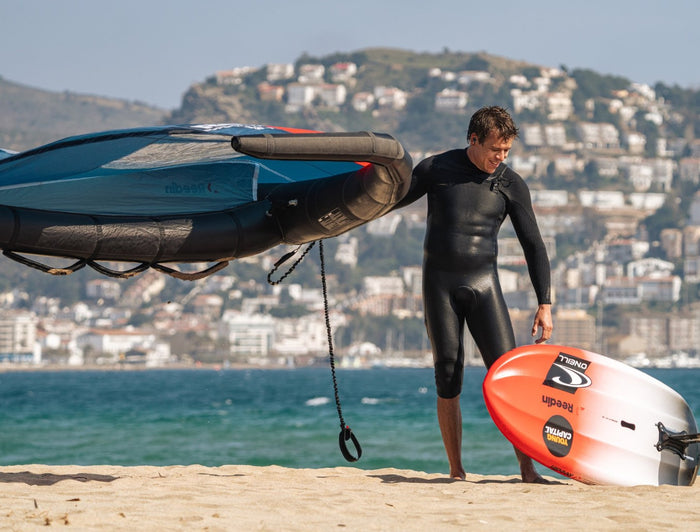Kitesurfing and safety: 9 tips for avoiding accidents


The question whether kiteboarding is dangerous or safe is hard to answer. Like any extreme sport, kitesurfing carries a certain level of risk. Of course accidents sometimes occur, but particularly in situations where safety precautions are not followed or when weather conditions are unpredictable. However, being aware of potential risks and continuously improving your skills and knowledge will help you mitigate these dangers. This means that if you follow the kitesurfing rules and safety guidelines, it is a relatively safe sport. Here are 9 good tips to keep you safe.
If you're new to kitesurfing, it's advisable to take lessons from a certified instructor. They will teach you the necessary skills, safety procedures, and knowledge about wind conditions, kite and board control, and self-rescue techniques.
Always check the weather and water conditions before you head out. Make sure the wind is within your skill level and the water conditions are suitable. Avoid strong offshore winds, gusty conditions, or crowded areas with obstacles.
Familiarize yourself with the local conditions and potential hazards. This includes recognizing (underwater) obstacles, such as breakwaters, jetties, rocks or reefs, and being mindful of marine life, tides, and currents in the area.
Always wear safety equipment like a helmet, impact vest, and a harness with a quick-release mechanism. These items will protect you in case of a fall or collision. Additionally, wear a wetsuit to stay warm in case you have to stay in the water for a longer period of time.
Regularly inspect and maintain your kitesurfing gear. Check the lines, bridles, and connections for any signs of wear or damage. Replace or repair any faulty components to ensure your equipment is in a good state.
Know your skill level and don't attempt maneuvers or conditions beyond your abilities. Try to progress gradually and practice new techniques and maneuvers in conditions with lighter wind.
Kitesurfing is often practiced in shared spaces. Respect other kiteboarders, water users, swimmers, and beachgoers. Maintain a safe distance from others and avoid crowded areas. Be aware of local regulations and any restricted zones.
Self-rescue techniques can help you to handle risky situations effectively. Practice specific techniques such as self-landing the kite, body dragging, and relaunching the kite from the water.
Whenever possible, go out with a buddy. Having someone nearby can provide assistance in case of an emergency. Keep an eye out for each other and communicate using hand signals or pre-established communication methods. Surfing with a buddy is more fun too!
Remember, safety should always be your top priority when kitesurfing. By following these tips and following the kite rules, you can reduce the risk of accidents and enjoy this thrilling sport responsibly!
Be the first one to know all the latest news and exclusive offers!
*valid for new members only.
cart.general.warning
0 comments